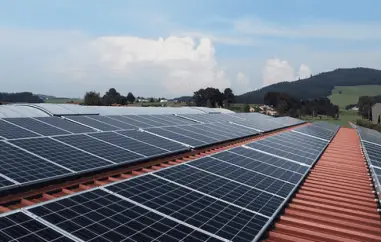The Environmental Impact of AI: Water Usage in Data Centers
 In the digital age, the environmental impact of artificial intelligence (AI) and big data is a growing concern. One often overlooked aspect is the substantial amount of water required to cool data centers, which are essential for running AI models like ChatGPT. These centers house powerful servers that generate significant heat, necessitating extensive cooling systems that consume vast quantities of water.
In the digital age, the environmental impact of artificial intelligence (AI) and big data is a growing concern. One often overlooked aspect is the substantial amount of water required to cool data centers, which are essential for running AI models like ChatGPT. These centers house powerful servers that generate significant heat, necessitating extensive cooling systems that consume vast quantities of water.
Data centers are critical for ensuring the smooth operation of everything from social media to complex AI applications. However, this convenience comes with an environmental cost. A typical data center can use hundreds of thousands of gallons of water daily to prevent servers from overheating, which can lead to performance issues and hardware failures.
For AI models like ChatGPT, which process and generate large volumes of data, the cooling requirements are even more significant. Data centers can use up to 1.8 liters of water per kilowatt-hour of energy consumed. Given the energy-intensive nature of training and running AI models, the water footprint is substantial.
To illustrate, consider the impact of downloading data. For every gigabyte (GB) of photos downloaded, data centers may consume approximately 200 liters (about 53 gallons) of water for cooling. This figure can vary based on the efficiency of the data center's cooling systems and the local climate but provides a general sense of the environmental footprint of our digital activities.
The growing demand for data processing and storage increases the pressure on water resources. As AI applications become more integrated into our daily lives, the strain on water supplies is likely to rise, especially in regions already facing water scarcity.
Efforts to reduce the environmental impact of data centers are underway. Innovations in cooling technology, such as liquid cooling and the use of renewable energy sources, are being explored to reduce water and energy consumption. Some data centers are being built in cooler climates to leverage natural cooling, reducing the need for water-intensive systems.
Companies are also adopting sustainable practices to improve operational efficiency. Google has invested in advanced cooling technologies and water recycling systems to minimize its data centers' environmental impact. Microsoft has committed to achieving water-positive operations by 2030, aiming to replenish more water than it consumes in its data centers.
Addressing the water usage of data centers requires a combined effort from both the industry and consumers. Users can contribute by being mindful of their digital consumption, such as reducing unnecessary downloads and optimizing storage practices. Supporting companies that prioritize sustainability and transparency can also drive broader change.
In conclusion, the water usage associated with AI operations like ChatGPT highlights the hidden environmental cost of our digital age. As demand for data processing and storage grows, it is crucial to adopt and support sustainable practices to protect our water resources. By fostering innovation and promoting responsible consumption, we can ensure that the benefits of AI and digital technologies do not come at an unsustainable cost to the environment.












































